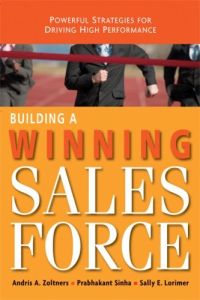Join getAbstract to access the summary!

Join getAbstract to access the summary!
Andris A. Zoltners, Prabhakant Sinha and Sally E. Lorimer
Building a Winning Sales Force
Powerful Strategies for Driving High Performance
AMACOM, 2009
What's inside?
A learned report on building your sales staff: How to master 12 driving forces to make your sales team a star.
Recommendation
To reveal the potential of your sales force, analyze and evaluate 12 sales effectiveness drivers. Maximize the benefits of those drivers and you often can maximize sales. Sales experts Andris A. Zoltners, Prabhakant Sinha and Sally E. Lorimer explain how these drivers work. Their comprehensive book is filled with flow charts, scatter plots and other graphic presentations of data, underscoring the authors’ technical rigor. The book also offers case studies that bring the authors’ points down to earth. If the painstaking information is any indication, this team has thought long and hard about improving sales force effectiveness and it understands the subject exceedingly well. getAbstract believes readers can learn a great deal about building a great sales force from these astute observers.
Summary
About the Authors
Andris A. Zoltners, Ph.D., teaches marketing at Northwestern University’s Kellogg School of Management. Prabhakant Sinha, Ph.D., teaches sales at the Indian School of Business and at Kellogg. Sally E. Lorimer is a consultant and writer on developing sales force effectiveness. They are also the authors of Sales Force Design for Strategic Advantage.



















Comment on this summary